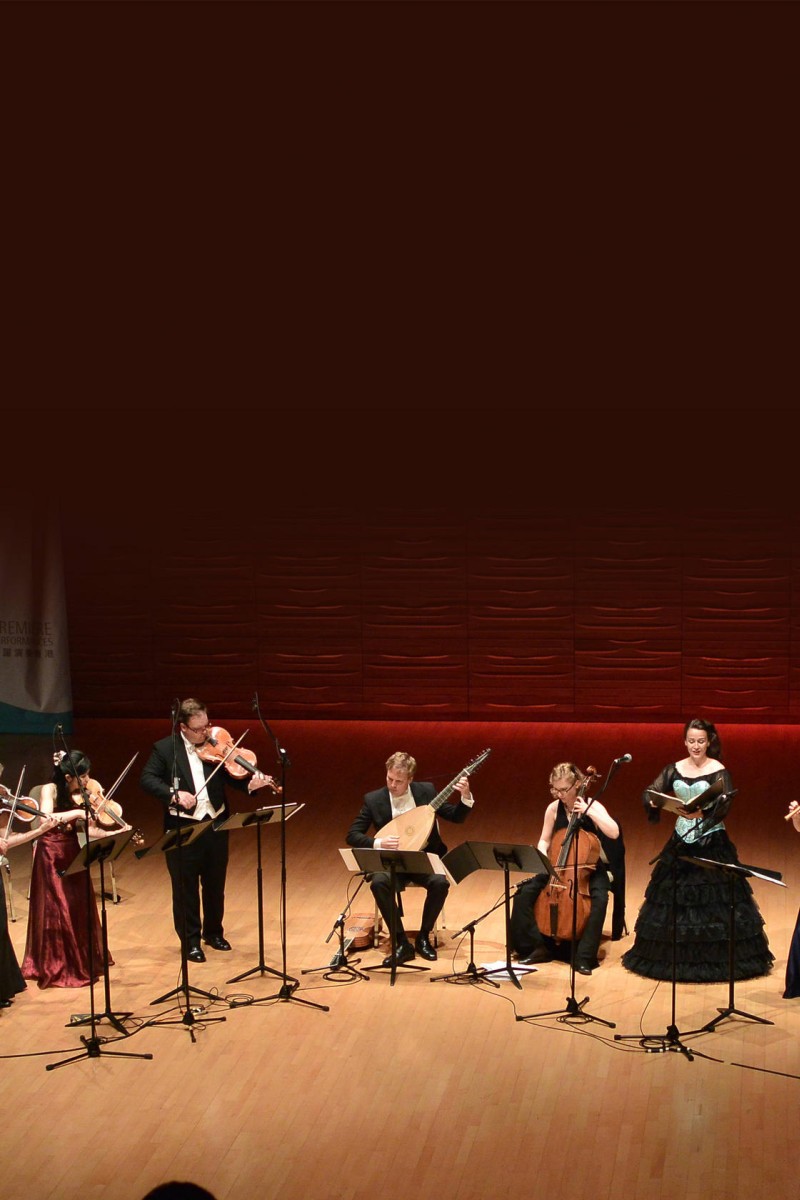
Baroque music was at its peak in the mid-1700s, but as junior reporter May Huang discovered at a recent concert, the music and its special instruments are still alive and well
 The New Dutch Academy showed their mastery of classic baroque at Sunday's concert at HKAPA.
The New Dutch Academy showed their mastery of classic baroque at Sunday's concert at HKAPA.On Sunday evening at the Academy for Performing Arts, the New Dutch Academy put on a show that featured baroque instruments ranging from the standard violin to the lesser-known lute. These different sounds combined to bring us, as conductor Simon Murphy promised, the "rich variety of the music in 18th century Europe".
Instruments of the era
The first piece was Hacquart's Sonata a Quattro in E minor. The violins, viola, cello and lute blended their distinct sounds in a layered melody of long, well-paced notes.
Lute player Karl Nyhlin added a special texture to the music by plucking his instrument. He and cello player Aleksandra Renska maintained the pulse of each piece throughout the night.
But the standout string instrument was Murphy's viola. It had a strong, rustic sound that, alongside its sister violins, offered a special baroque feeling to the music.
This was clearly heard later in the Telemann concerto, where Murphy proved that the viola's weight does not slow down his playing.
The singer joins the band
Apart from playing string pieces, the New Dutch Academy also showcased baroque vocal music.
For the night's second piece, Handel's Meine Seele hört im Sehen, the three violins and viola were replaced by German soprano Gudrum Sidonie Otto, and Elizabeth Champollion on the recorder.
The singer livened up the performance with her theatrical expressions and dramatic stage presence, while the recorder player delivered playful and clear notes that added to the energy.
Otto's vocals were perfectly in sync with the recorder's trills, proof of dedicated practice and genuine musicality. Their lively duet, backed by the lute and cello, was especially delightful in Fesch's Canzonetta, the piece that opened the second half of the concert.
The recorder steals the spotlight
Champollion was mostly quiet for the first half of the night, but came to life after the interval.
Her solos from Schickhardt's L'Alphabet de la Musique featured a pastoral sound, characteristic of the Bach period.
But perhaps the best performance of the night was her solo work in Vivaldi's Concerto in C.
Squeezing 16 notes into one breath, Champollion impressed the audience with perfectly delivered trills. She had many recorders, and no matter which one she was playing, she proved that it is a very underestimated instrument.
Despite the slow second movement, the piece was festive, optimistic, and a perfect example of baroque music's liveliness.
Audience can't get enough
As the performance came to a close with Bach's Alleluia, all the instruments were played together for the first time, and the musicians showed the same enthusiasm as they did for the opening piece.
Otto's soaring vocals rang through the hall while Renska's deep cello notes gave the music its backbone. Indeed, it was impossible for the seven players to hide their energy and passion for their music.
A long round of applause brought the ensemble back for an encore, during which Nyhlin finally got a chance to show off his lute playing, as the only thing missing from the programme was a lute solo.
Baroque music sometimes has a reputation for being boring, but Sunday's concert proved that the music of Bach's age has a timeless appeal that continues to draw modern audiences to ensembles such as the New Dutch Academy.
Young Post organises regular activities for our junior reporters. If you wish to join, send your name, age, school and contact details to [email protected] with "jun rep application" in the subject field